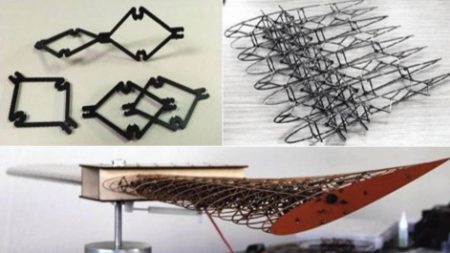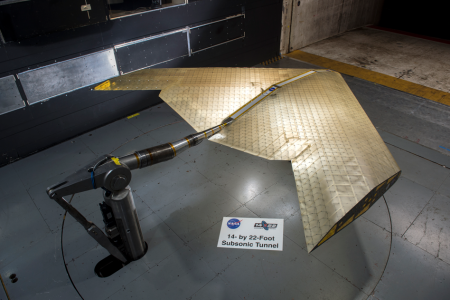April 1, 2019 – Birds have deformable wings. Airplanes don’t. We fly around in fixed-wing aircraft but not birds. They can alter the shape of their wings during every phase of flight from take off to soaring to landing. We can’t, yet. But that may soon end if work being done by NASA and MIT becomes widely adopted by aeronautical engineers.
What the agency and university have developed is a technology that allows a wing to digitally morph. The wing structure uses thousands of triangular components to form a lattice. Each wing consists of these identical components which are lightweight and shape-shifting making it possible to morph in flight. This aerodynamic flexibility has been demonstrated at NASA’s Ames Research Center in wind-tunnel tests and is described in a recent article appearing in Smart Materials and Structures.
Since Leonardo da Vinci’s first conceptions of human-powered flight, we have been searching for a way to emulate birds. And although we finally achieved powered-flight in the early 20th century, we have never been able to do it the way birds fly. Both birds and airplanes use Bernoulli’s Principle, that is the forward movement of air over a curved wing surface creates lift. The way birds do it is by flapping their wings using powerful breast muscles. Airplanes have engines, either jet or propellor-driven, to achieve the same result. But birds alter the shape of their wings through all aspects of flight while airplanes have fixed wings with movable surfaces like flaps and ailerons to make flight alterations. Up until now, we couldn’t deform wings the way birds do. But NASA and MIT may have come up with an engineered solution.
Shape-changing materials have distinct advantages when you are looking to achieve flight. Like the feathers that birds have evolved to support winged-flight, the new wing design from NASA and MIT includes assemblies of similarly constructed reproducible structures featuring low stiffness and deformability. This means wings can be designed without those separate movable parts, which means they can be lighter, more energy efficient, and require fewer servo-motors, cables, and other internal mechanisms to achieve deformability.

How is this possible?
The NASA and MIT wing deforms in response to flight conditions. The wing reacts passively to the surrounding environment, bending in response to the different phases of flight. Where birds actively alter their wing shapes when taking off, cruising, and landing, the new wing can do it passively.
Imagine how this can alter the way aircraft get designed in the future with the modular nature of the lattice material. Manufacturers can assemble as many of the units similar to those depicted in the pictures above to create a variety of wing-like structures that could be used in bridges, wind turbine blades, and, of course, airplanes. NASA also sees its potential for constructing space-based structures.








